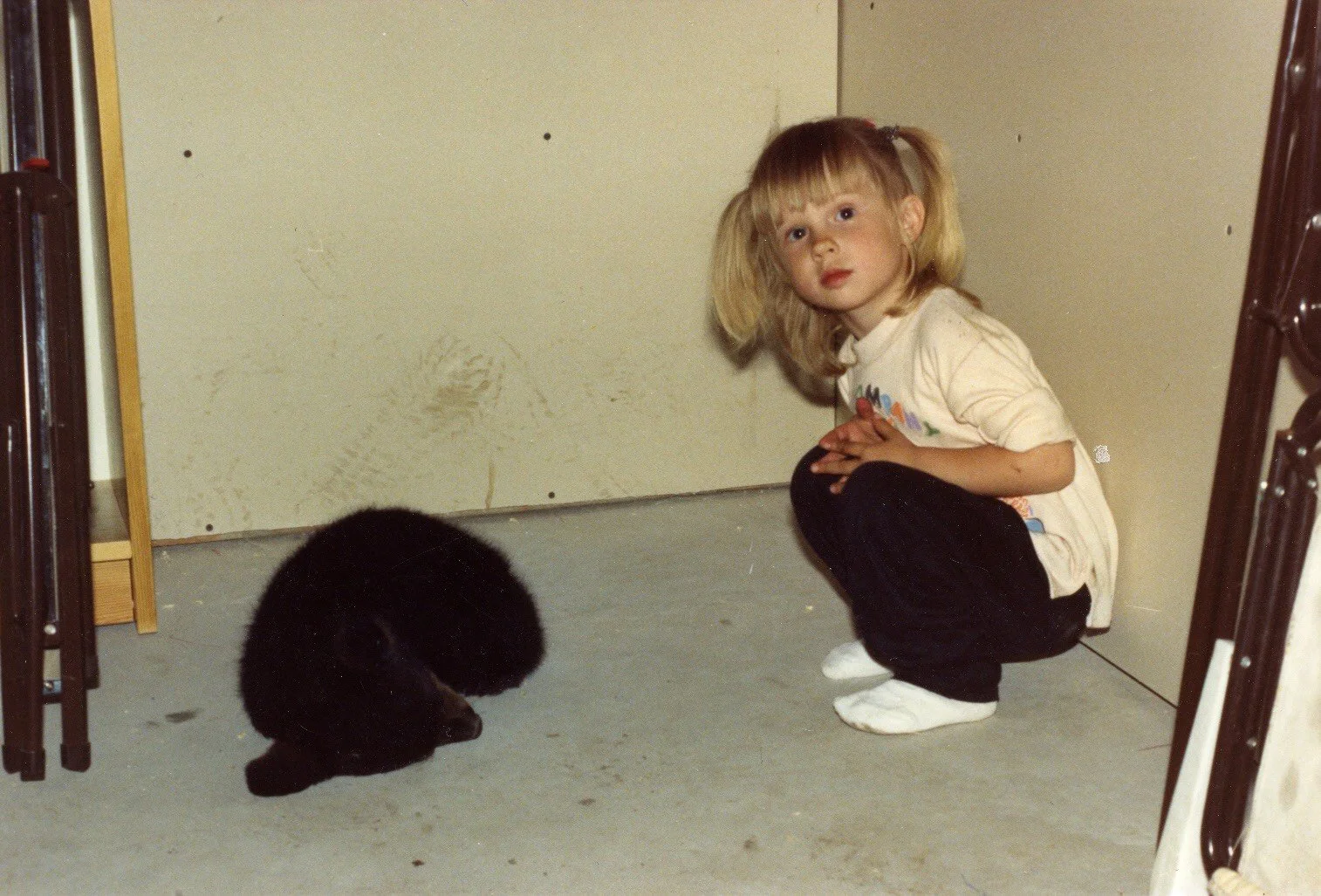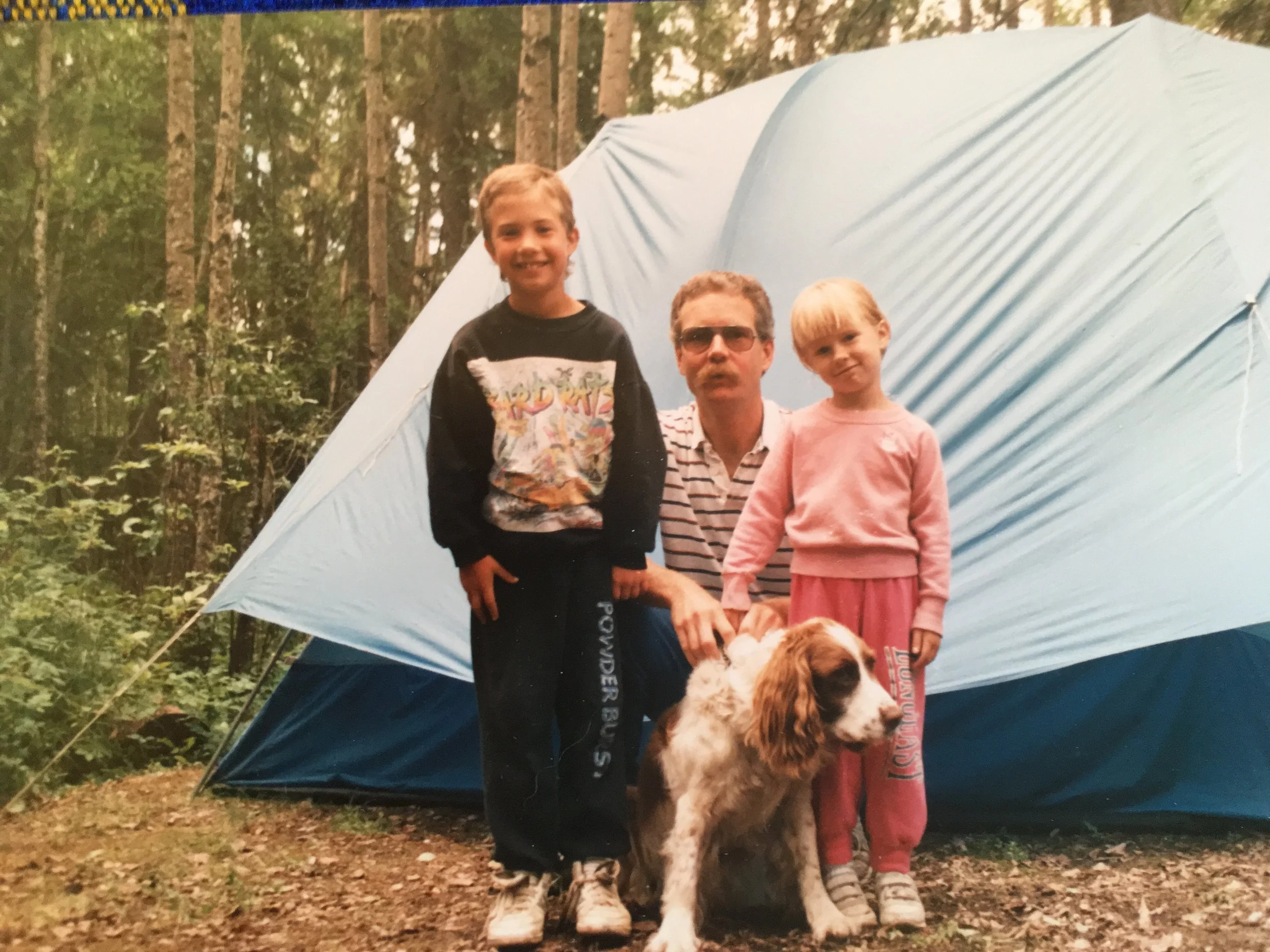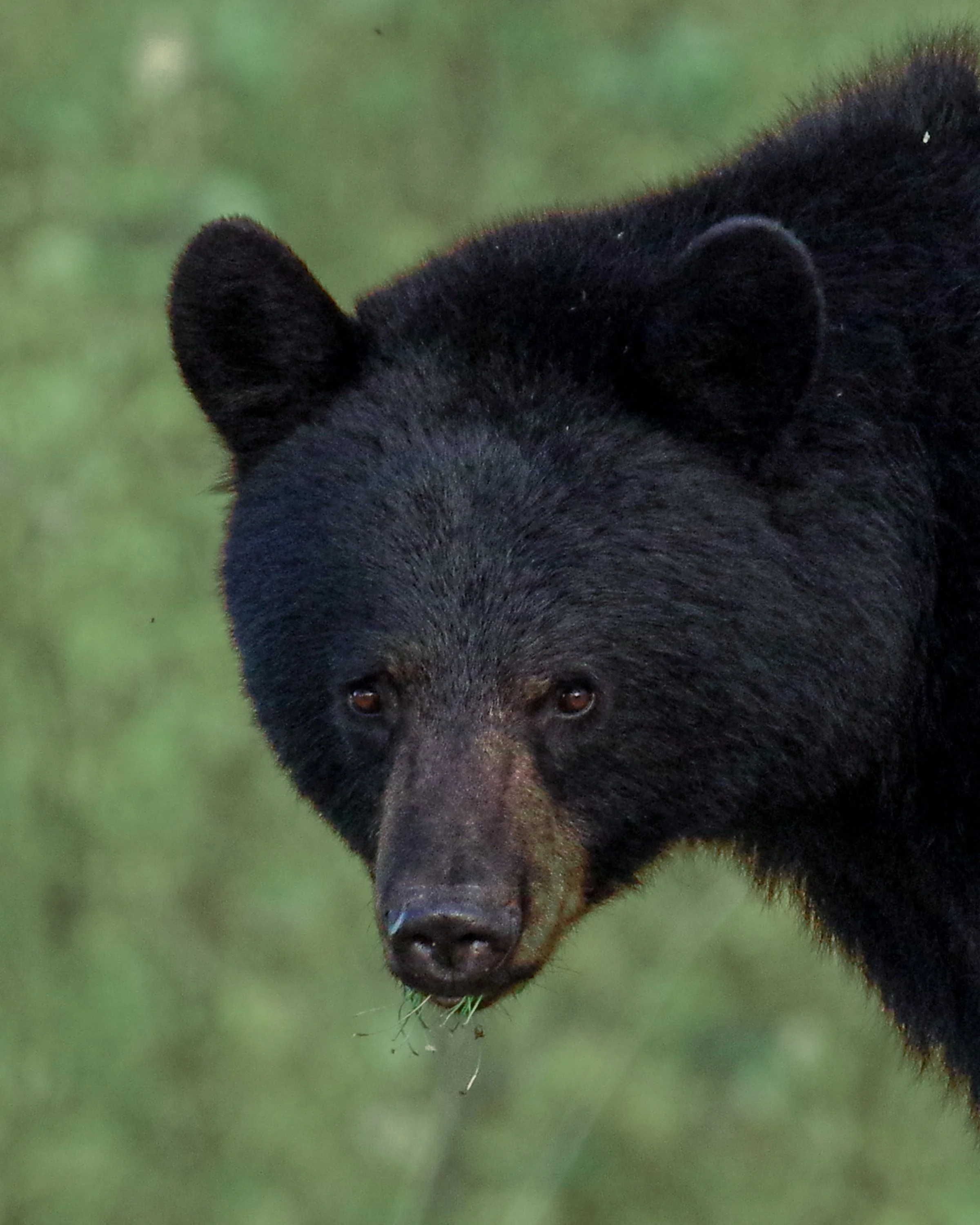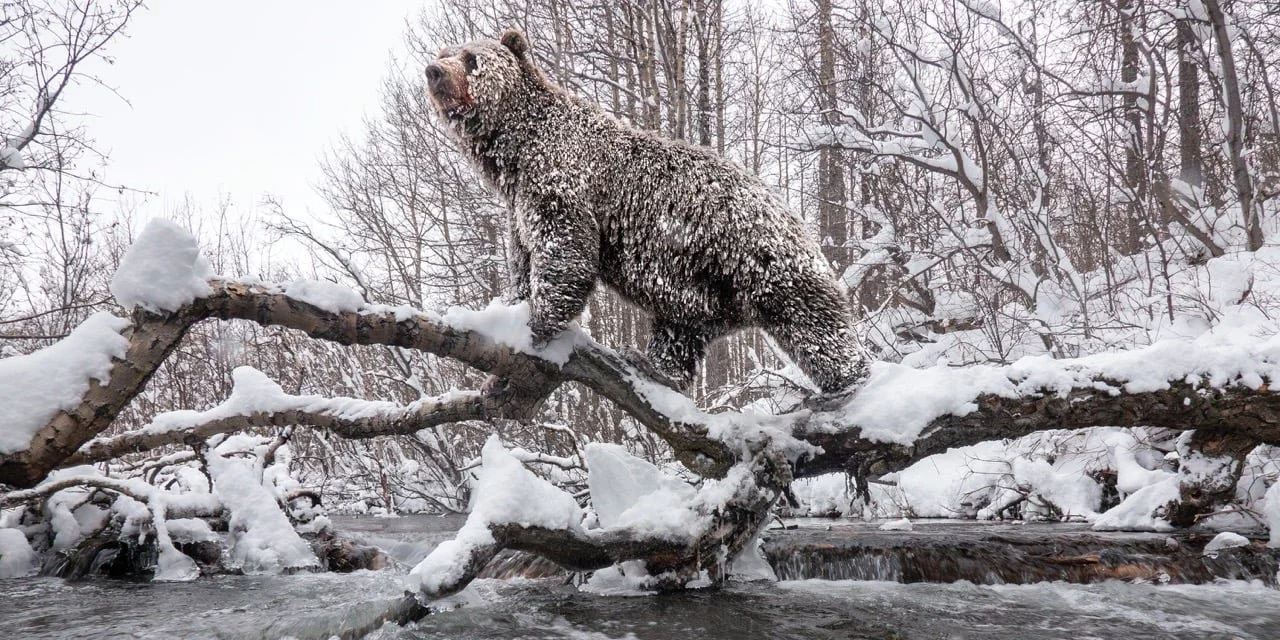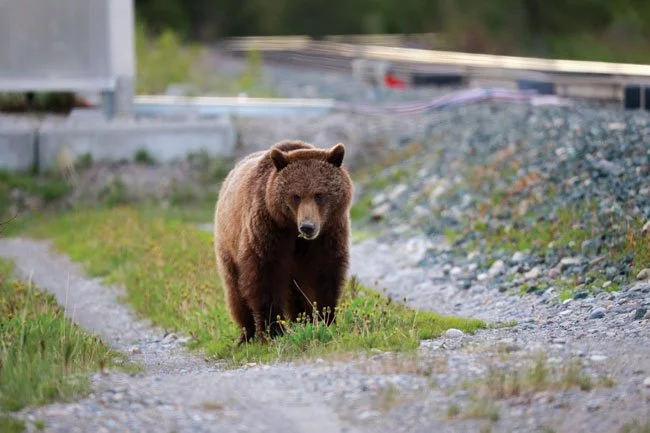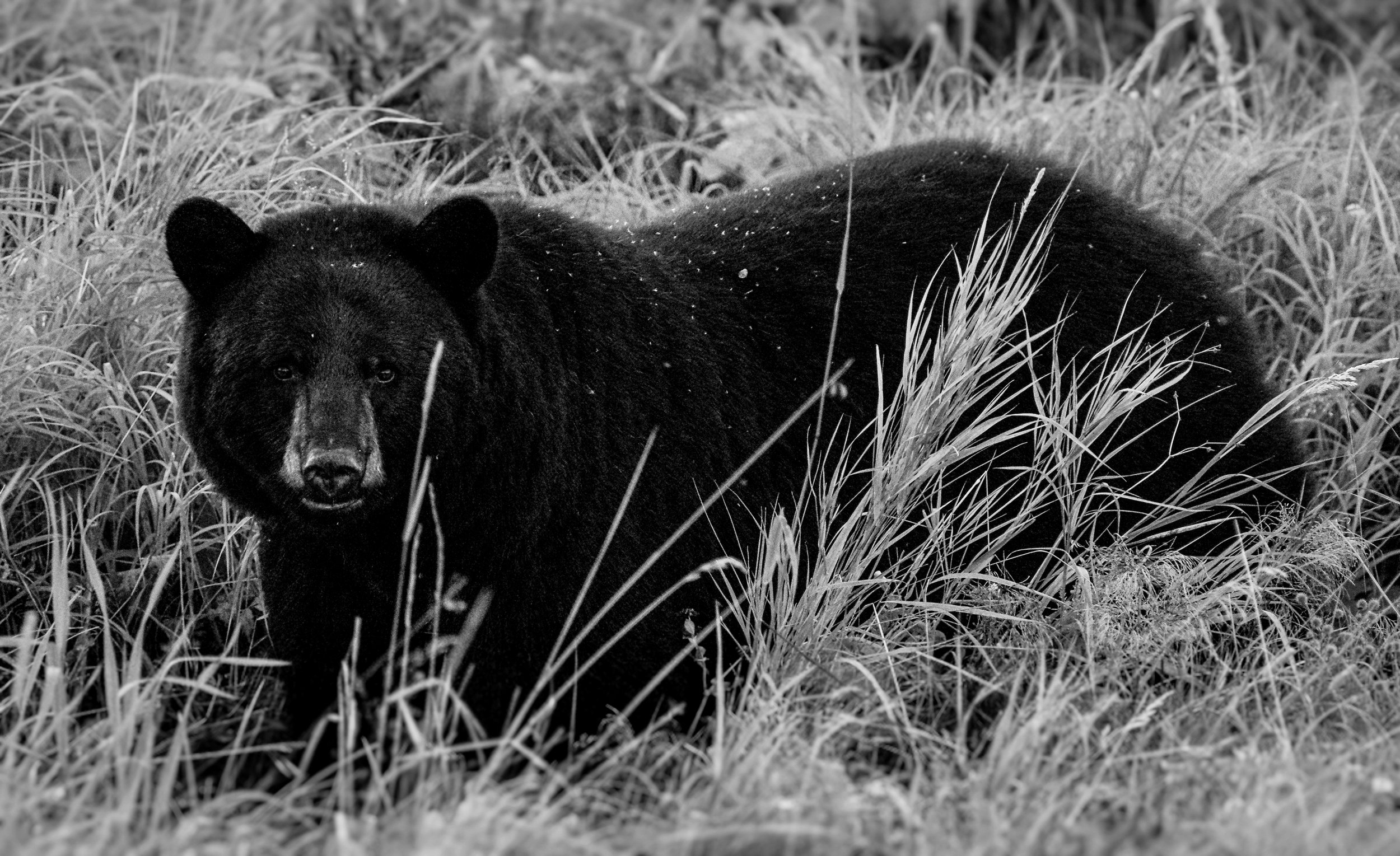
BLACK BEAR
COMING JAN. 6, 2026
Knopf Canada
WHEN TRINA MOYLES WAS FIVE YEARS OLD, her father, a wildlife biologist known in Peace River as "the bear guy," brought home an orphaned black bear cub for a night before sending it to the Calgary Zoo. This brief but unforgettable encounter spurred Trina’s lifelong fascination with Ursus americanus—the most populous bear on the northern landscape, often considered a nuisance to human society.
As a child roaming the shores of the Peace in the footsteps of her beloved older brother, she understood bears to be invisible entities: always present but mostly hidden and worthy of respect. Growing up during the oil boom of the 1990s, the threats in the siblings' hard-drinking resource town were more human, dividing them from a natural reverence for the land, and eventually, from each other.
“
I sensed that I could not live beside the creature for much longer and refer to it so generally: bear.
For the bear was not just any black bear. The bear was its own bear, just as I was my own person. And I was not like most of the women I knew in my life. Thirty- five. Solitary. No offspring. Habitually living alone in the woods for half a year. I’d spent nearly two of the past five years alone with my dog in the boreal forest. I did not represent all women any more than the small bear represented all bears.
Osa.
Spanish, feminine of Oso, for bear.
The name surfaced in my mind and stuck.
”
After years of working for human rights organizations, Trina returned to northern Alberta for a job as a fire tower lookout, while her brother worked in the oil sands, vulnerable to a boom-and-bust economy and substance addiction. When she was assigned to a tower in a wildlife corridor, bears were alarmingly visible and plentiful, wandering metres away on the other side of an electrified fence surrounding the tower. Over four summers, Trina begins to move beyond fear and observe the extraordinary essence of the maligned black bear—a keystone species who is as subject to the environmental consequences of the oil economy as humans. At the same time, she searches for common ground with her brother on the land that bonded them.
Impassioned and eloquent, Black Bear is a story of grief and a vision of peaceful coexistence in a divided world. It captures the fragility of our relationships with human and nonhuman species alike, and the imperative to protect the wild—along with the people we hold closest.
BLACK BEAR
A story of siblinghood and survival
advanced praise for black bear

get to know Black Bear
Setting the scene:
the watch tower
Deep in the boreal forest, perched up at 30 metres in the sky, Trina can see far and near. Below, discover the lay of the land around her — and the ways of the black bears she came to know.
The Characters:
TWO LEGGED & FOUR
-
In the early days, there was no separation between Brendan and me, in the way it can be with close- in- age siblings. There was only us. People always said we looked alike. His hair was dirty blond and curly whereas mine was the colour and texture of cornsilk. But we had the same impish smile and chipmunk cheeks and the same colour of eyes, somewhere between blue and grey, the colour of a swollen thunderhead on a hot day in July. As the older brother, Brendan was the one I always turned to to ask: Where do we go from here?
-
I was five years old when I had my first encounter with a black bear. In the spring of 1990, my father, a wildlife biologist, brought home an orphaned three- month- old cub in a cardboard box….
My dad’s work as a biologist felt heroic, even godly, to my five- year- old mind. He seemed to be able to communicate with animals in their wordless languages. He wasn’t afraid to get close, handling them with the same affection he showed when tucking us in at night.
-
“As the bear lifted its nose to scent the air, I noticed the birthmark on its chest: two white crescent moons. It came to me as a small shock that I recognized the small bear, the same way one might recognize the younger sibling of a friend after many years apart. The yearling cub was no longer a cub, but a two- and- a- half- year- old bear.”
-
“He sniffed the scaly bark and hoisted himself upright, unfolding his long body like a magic trick. The bear began to rub his back vigorously against the trunk of the tree, one paw reaching back, digging into the bark. I gasped as he revealed a strange birthmark, a circle of white fur hidden on his upper chest. An emblazoned O. He thrust back his head and gyrated, whole body, against the tree.”
-
“I tiptoed to the edge of the fence, trying to conceal my body behind the outhouse. I felt a strange excitement to recognize the bear almost immediately as the mother bear— Osa’s mother. Her distinct sway- back. Her confident, wide- legged stance. She grazed at the far edge of the forest and I sensed she knew I was there, although she did not look up at me.”
-
“After midnight, a large bear slowly emerged from the cutblock into the clearing around the cabin. I recognized the slender face of Big Mama, her fur glowing more blue than black. A gargantuan- sized bear followed closely behind her like a boulder…”
-
“The bear appeared more myth than mammal. I stood dumbly on the porch, shocked by his beauty. And then it dawned on me: It was the same cinnamon bear who’d attempted to mate with Osa’s mother. He was shedding out his lush winter coat, revealing an entirely different shade beneath.”
-
As I watched Osa with her cub, Sof trotted over and sat beside me on the hill. Osa’s cub caught wind of the puppy and stood up on his hind legs. He craned his neck around, nose quivering, as though memorizing our scent: a hairless two- legged one and her wolf pup. I noticed a single white crescent moon on his chest.
I decided to call him Osito, Spanish for “Little Bear.”
-
“I looked down into Holly’s eyes and felt a kind of inadequacy, wanting to journey into her olfactory world, but I was without a map. What did she know about the bears that I didn’t?”
-
“The puppy woke up and must’ve scented the bear, for she trotted over to the electric fence and peered down at Osa with great intrigue. Sof glanced back at Holly, who slept beneath the tower, as if to confirm, You mean we are cool with this big, black sleeping dog? After a few minutes Sof lost interest in the bear and curled up into a ball in the grass.”I decided to call him Osito, Spanish for “Little Bear.”
-
“I ran my hand down the worn power pole and snapped a photo with my cellphone to send to my dad. The wood was smooth and polished, lacquered by the bears’ oily fur. Why had they chosen this pole? How long had they been coming here to carve their desire into the wood?
I noticed a set of large bear tracks at the base of the pole, and tufts of black hair that had snagged and caught on the wood. I plucked the coarse, oily hairs and held them up to my nose. They smelled of musk, a scent beyond my knowing.”
Tour dates
JANUARY 7 - EDMONTON - 7 PM
In Conversation with author, Conor Kerr, hosted by the Edmonton Public Library at the Strathcona Branch, 8331 104 Street. Free admission.
JANUARY 9 - WHITEHORSE - 7 PM
In Conversation with poet, Joanna Lilley, and filmmaker, Allan Code, hosted by the Beringia Centre, located at km 1423 Alaska Highway. Free admission.
JANUARY 15 - CALGARY - 7 PM
In Conversation with author, Kevin Van Tighem, hosted by Word Fest. Memorial Park Library, 2nd Floor. $25 tickets. Reserve online.
JANUARY 29 - OTTAWA - 7 PM
Can Geo Talks, hosted by the Royal Canadian Geographical Society, 50 Sussex Drive.
FEBRUARY 3 - TORONTO - 7 PM
In Conversation with author Claire Cameron, hosted by Flying Books, at Neverland location, 371 Queen Street, West. Free admission.
If you're interested in Trina speaking at your event, please get in touch.
Related Articles
Canadian Geographic
The Good Bear: Coexistence along Yukon’s Klukshu River
As the World’s Polar Bear Capital Waits for Ice, Bears are Increasingly Drawn into the Streets
The Narwhal
Alberta Views
